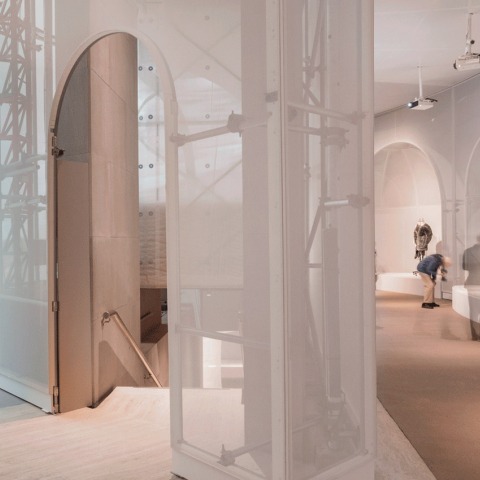The dichotomy between manual and automated production in architecture is developed in the nineteenth century with the invention of the sewing machine. The relationship between these two methods antithesis clothing is questioned by OMA New York in an exhibition that will feature approximately 120 pieces, ranging from a dress Worth 1880 to a Chanel suit 2015.
The exhibition will be held in the Robert Lehman Wing and the Anna Wintour Costume Center, MET Museum. The first of the spaces will host couples yin-yan garment with couture clothes and its opposite ready-to-wear. The organization of the pieces follows the traditional structure of a sewing workshop. However, the Anna Wintour Costume Center will host workshops "in process" with, for example, a 3D printing shop, where visitors can see live the process of creating 3D clothing.
OMA New York will also be the head of the design Costume Institute Benefit, which will be held on May 2.
The Costume Institute exhibition in the spring of 2016 will be presented at the MET Museum. The organization of the same shall be borne by Shohei Shigematsu, director of OMA New York. The exhibition explores conciliation by fashion designers between manual and automated production in both creating couture garments and ready-to-wear.
More information
Published on:
May 3, 2016
Cite:
"Manus x Machina: Fashion in an Age of Technology by OMA" METALOCUS.
Accessed
<https://www.metalocus.es/en/news/manus-x-machina-fashion-age-technology-oma>
ISSN 1139-6415
Loading content ...
Loading content ...
Loading content ...
Loading content ...
Loading content ...
Loading content ...
Loading content ...
Loading content ...
Loading content ...
Loading content ...
Loading content ...
Loading content ...
Loading content ...
Loading content ...
Loading content ...
Loading content ...
Loading content ...
Loading content ...
Loading content ...
Loading content ...
Loading content ...
Loading content ...
Loading content ...
Loading content ...
Loading content ...
Loading content ...
Loading content ...
Loading content ...
Loading content ...
Loading content ...
Loading content ...
Loading content ...
Loading content ...
Loading content ...
Loading content ...
Loading content ...
Loading content ...
Loading content ...
Loading content ...
Loading content ...
Loading content ...
Loading content ...
Loading content ...
Loading content ...
Loading content ...
Loading content ...
Loading content ...
Loading content ...
Loading content ...
Loading content ...
Loading content ...
Loading content ...
Loading content ...
Loading content ...















































